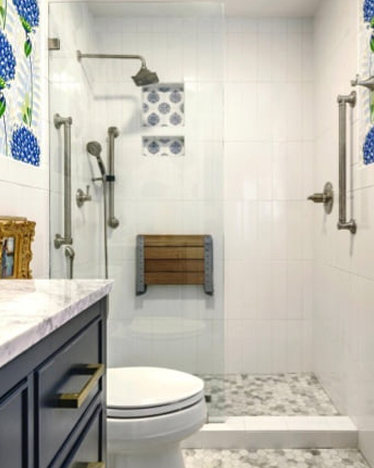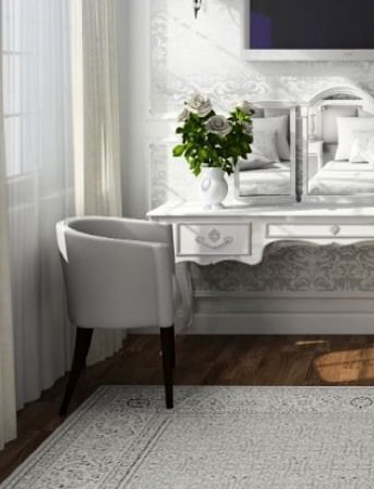Texture and material selection play crucial roles in interior design, as they greatly influence the look, feel, and functionality of a space.
Here’s a breakdown of considerations for selecting textures and materials.
Visual Appeal
Different textures and materials can evoke various visual effects. For example, smooth surfaces like glass or polished stone can create a sleek, modern look, while rough textures like exposed brick or natural wood can add warmth and character to a space.
Tactile Experience
Consider how textures will feel to the touch. Soft fabrics like velvet or suede can create a cozy and inviting atmosphere, while rougher materials may add an element of tactility and interest.
Functionality
Choose materials that are appropriate for the intended use of the space. For high-traffic areas or places prone to spills, durable and easy-to-clean materials like hardwood flooring or ceramic tiles may be preferable.
Aesthetic Cohesion
Ensure that the textures and materials chosen complement the overall design scheme and style of the space. Consistency in texture and material selection can create a cohesive and harmonious look, while mixing textures can add visual interest and depth.
Lighting Considerations
Keep in mind how different textures and materials interact with light. Glossy surfaces can reflect light and make a space feel brighter, while matte finishes can absorb light and create a more subdued ambiance.
Balance and Contrast
Strive for a balance of textures and materials throughout the space. Incorporating a variety of textures can add richness and dimension to the design, while balancing contrasting textures can create visual harmony.
Scale and Proportion
Consider the scale and proportion of textures and materials in relation to the size of the space and its furnishings. Large-scale patterns or textures may overwhelm a small room, while smaller-scale elements may get lost in a larger space.
Environmental Impact
Choose sustainable and eco-friendly materials whenever possible. Consider factors such as the material’s sourcing, manufacturing process, and longevity to minimize the environmental footprint of the design.
Cultural and Regional Influences
Take into account the cultural and regional context of the space when selecting textures and materials. Incorporating locally sourced materials or elements inspired by the area’s culture can add authenticity and relevance to the design.
Personal Preferences
Ultimately, the choice of textures and materials should reflect the preferences and lifestyle of the occupants. Consider their tastes, needs, and habits when making decisions about texture and material selection.
By carefully considering these factors, you can create an interior design scheme that is not only visually appealing but also functional, comfortable, and reflective of the occupants’ personalities and
lifestyle.
Ready to experiment with textures and materials? Let’s get started.






